Navigating the discharge process from the Intensive Care Unit (ICU) can feel overwhelming for both patients and their families. It's essential to understand the steps involved, as well as what to expect once you transition to a regular hospital room or home care. This journey can be filled with questions and emotions, but we're here to guide you through the process. Read on to explore our comprehensive discharge checklist and helpful tips to ensure a smoother recovery experience.

Patient details and discharge summary
The Intensive Care Unit (ICU) discharge process involves a thorough evaluation of the patient's condition prior to leaving the critical care environment. Patient details include vital statistics such as age (typically affecting recovery rates), medical history, and treatment specifics like medications administered (e.g., sedatives, antibiotics) during the ICU stay. The discharge summary encompasses key information such as diagnosis (e.g., pneumonia, sepsis), treatment outcomes (e.g., improvement in respiratory function), and follow-up care instructions. Documentation of vital signs (blood pressure, heart rate), lab results (complete blood count, electrolytes), and rehabilitation recommendations are crucial in ensuring ongoing care post-discharge. This comprehensive overview aims to prepare the patient and caregivers for a smooth transition to a lower level of care, emphasizing the importance of monitoring progress and recognizing potential complications.
Medication instructions and schedule
Patients transitioning from the Intensive Care Unit (ICU) to home or a recovery facility must adhere to specific medication instructions to ensure optimal recovery. Prescribed medications may include Pain Relievers (e.g., Acetaminophen, Ibuprofen) to manage post-surgical discomfort, Anticoagulants (e.g., Warfarin, Heparin) to prevent blood clots, and Antibiotics (e.g., Amoxicillin, Ciprofloxacin) to combat infections. Dosages should be strictly followed, often requiring twice a day or thrice a day administration based on physician directives. Patients should also maintain a precise schedule, typically involving morning and evening doses or timed intervals throughout the day. It's essential to monitor for side effects, including nausea or dizziness, and communicate any concerns immediately to healthcare providers. Clear labeling on medication containers enhances compliance, along with daily reminders or pill organizers to support adherence to the prescribed regimen.
Follow-up care and appointments
Discharge from the Intensive Care Unit (ICU) involves a detailed follow-up care plan that ensures a smooth transition to recovery. After leaving the ICU, patients are required to attend follow-up appointments with their primary care physician or specialist within one to two weeks to monitor healing and manage ongoing health issues. It's essential for patients to keep a detailed record of medications, including dosages and schedules, to prevent complications. Home healthcare services may also be arranged, providing additional support and therapy. Patients should be educated about warning signs (such as fever over 100.5 degrees Fahrenheit, increased pain, or unusual swelling) that necessitate immediate medical attention. Rehabilitation programs tailored to individual needs may be suggested, aiming to restore functionality and promote overall well-being. Consistent communication with healthcare providers is vital for effective recovery management.
Emergency contact information
Emergency contact information is crucial during the Intensive Care Unit (ICU) discharge process, ensuring patients have immediate access to support. This should include at least two reliable contacts familiar with the patient's condition, typically family members or close friends, available 24/7 for emergencies. Full names, phone numbers (preferably mobile for accessibility), and relationship to the patient must be clearly documented. Additionally, it may be beneficial to include the contact information of favored healthcare providers, such as the primary physician or a specialized nurse, to facilitate follow-up care and answer any post-discharge questions. Providing clear guidance on when to contact these individuals can help avoid any complications during the recovery phase after ICU care.
Lifestyle and rehabilitation guidelines
The ICU discharge process requires careful adherence to lifestyle and rehabilitation guidelines to ensure a smooth transition for patients returning to their everyday lives. Patients may need gradual increase in physical activity, often starting with simple exercises like seated leg lifts or walking with assistance, complemented by a tailored rehabilitation plan focused on strength, endurance, and functional mobility. Nutrition plays a crucial role in recovery; diets high in protein and essential vitamins, particularly vitamin C and zinc, are recommended to support healing. Follow-up appointments within one to two weeks post-discharge at the hospital or with an outpatient physiotherapy service are essential to monitor progress. Patients should also be educated on recognizing warning signs (like excessive fatigue, shortness of breath, or sudden pain) to ensure timely follow-up with healthcare providers. Adhering to prescribed medications as outlined during discharge instructions, including anticoagulants post-surgery or antibiotics to prevent infections, is vital. Overall, a supportive network and gradual reintegration into daily activities are crucial components for a successful recovery after ICU discharge.

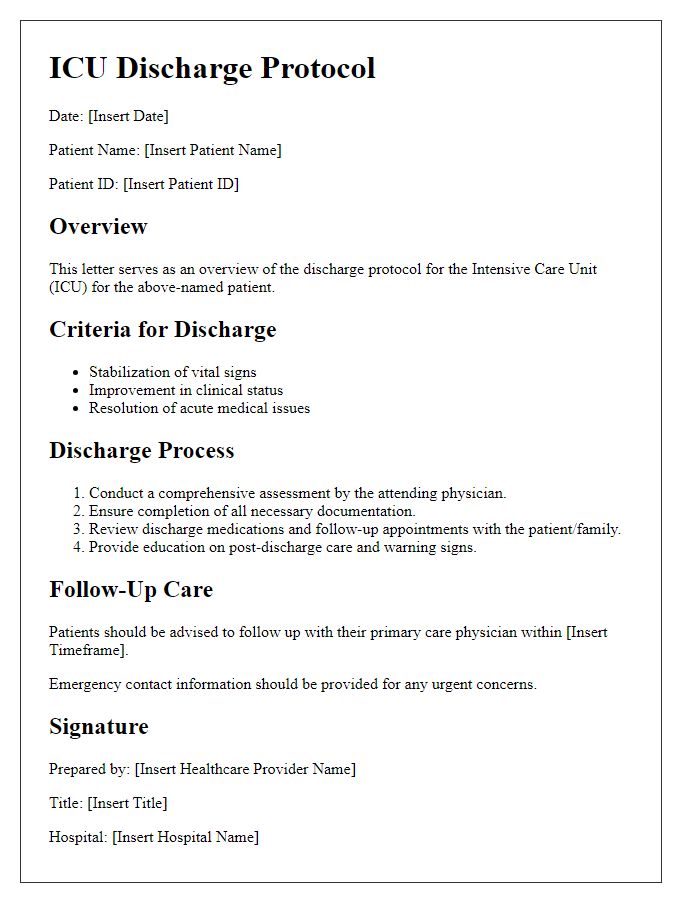
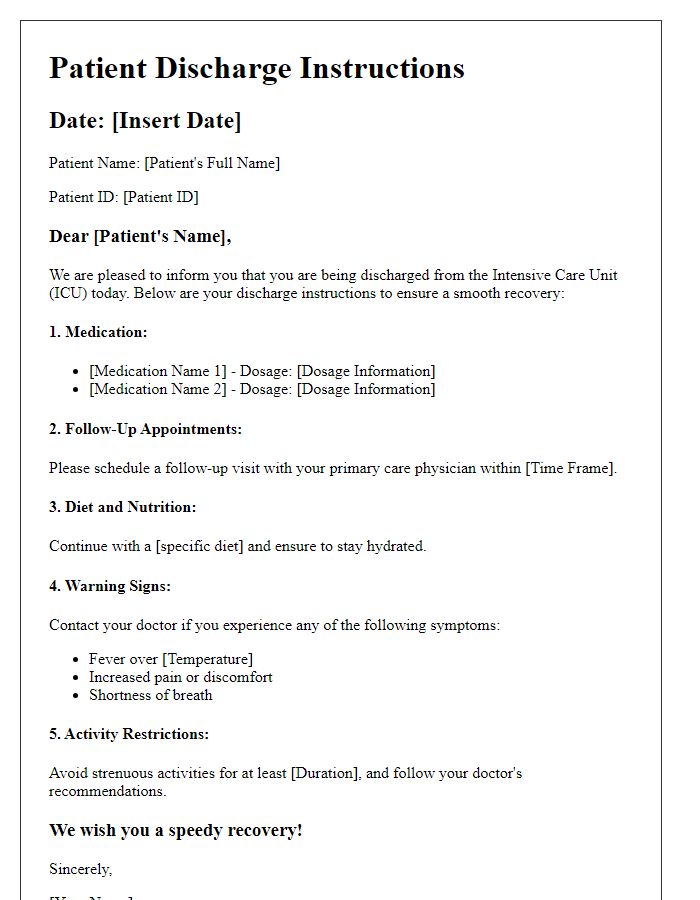
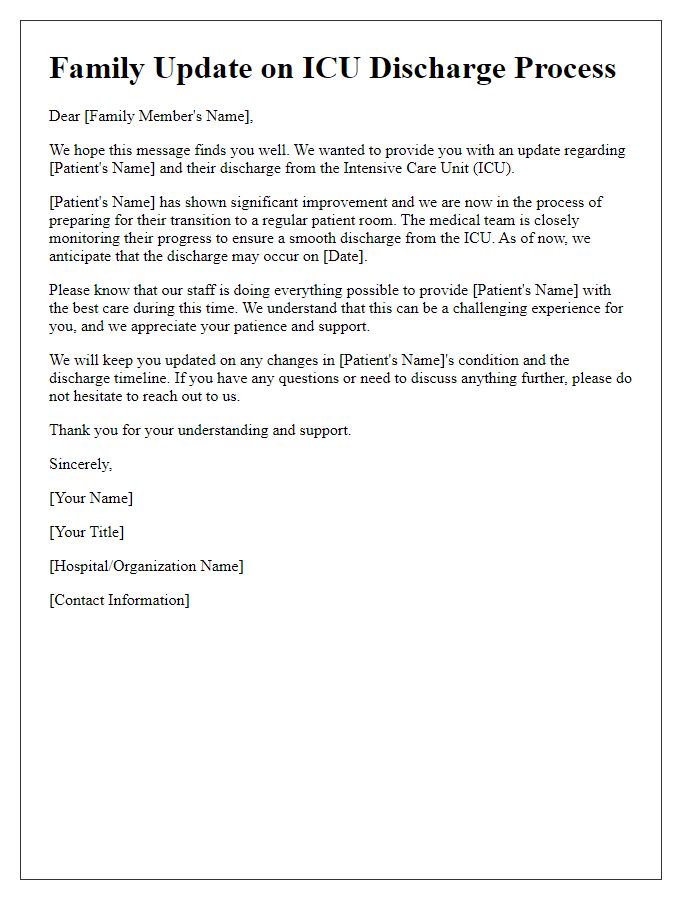

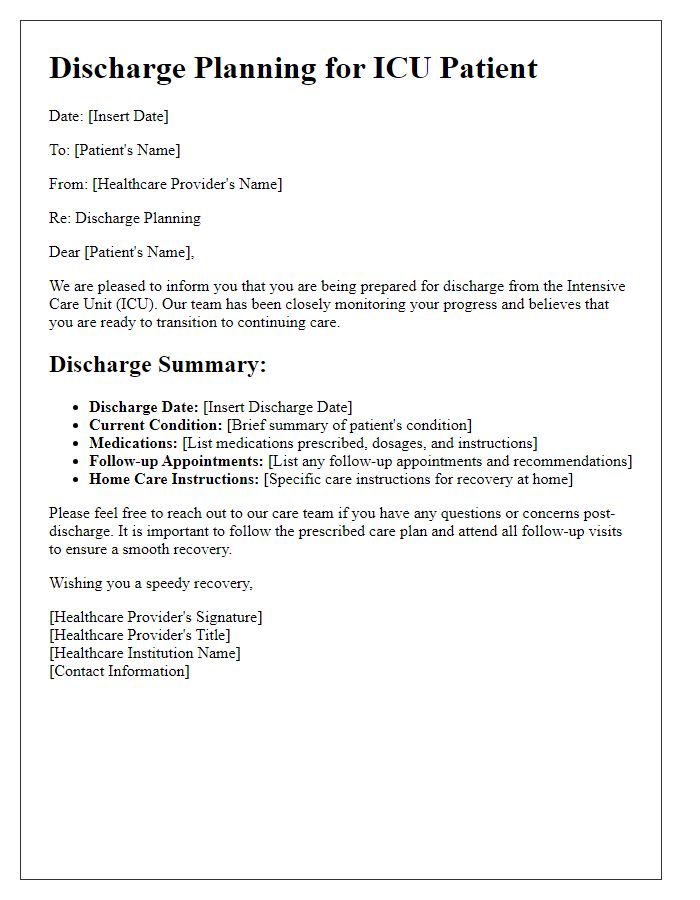
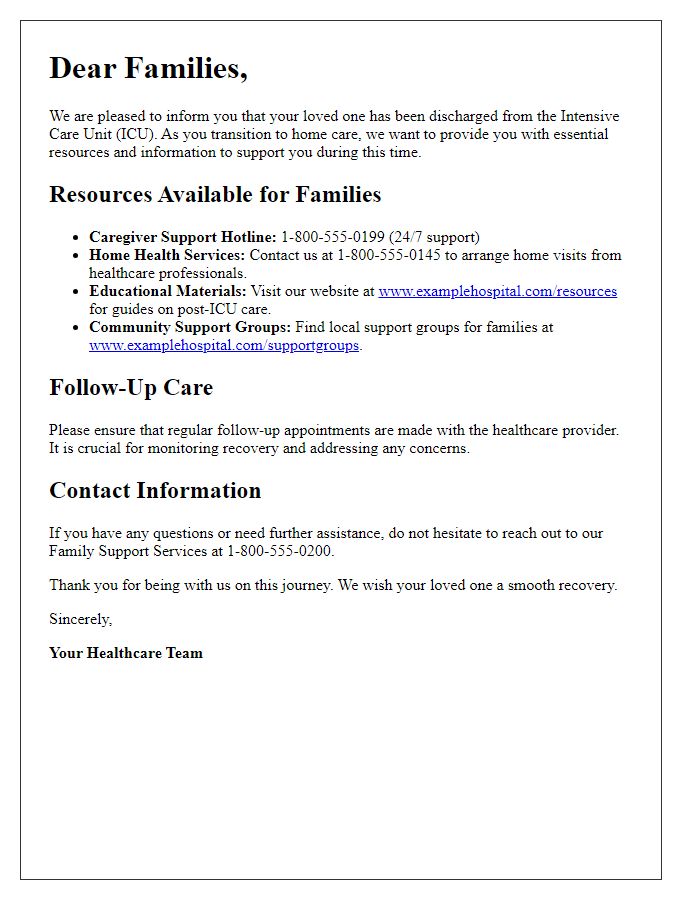

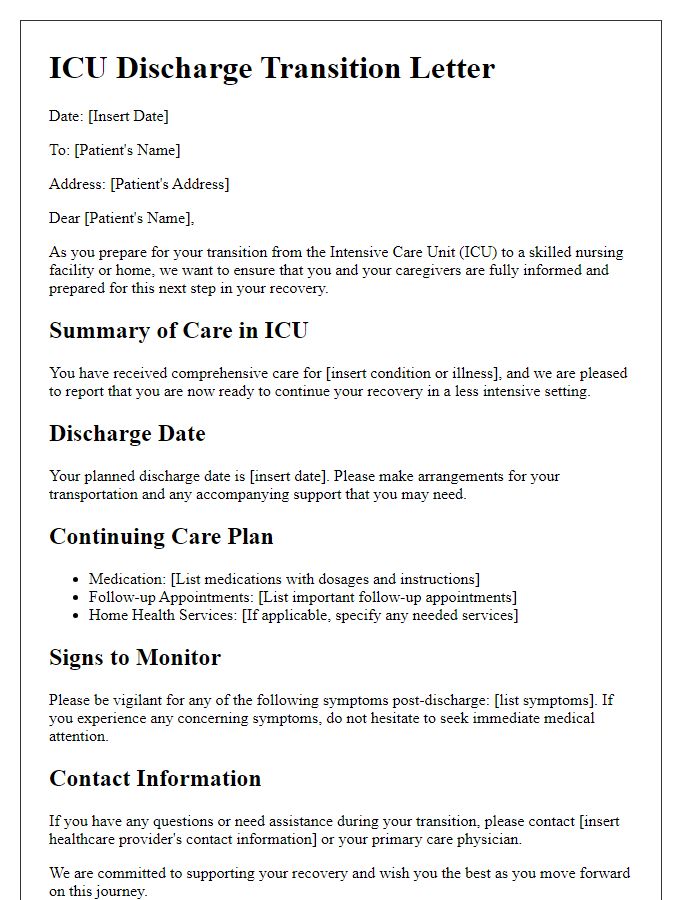
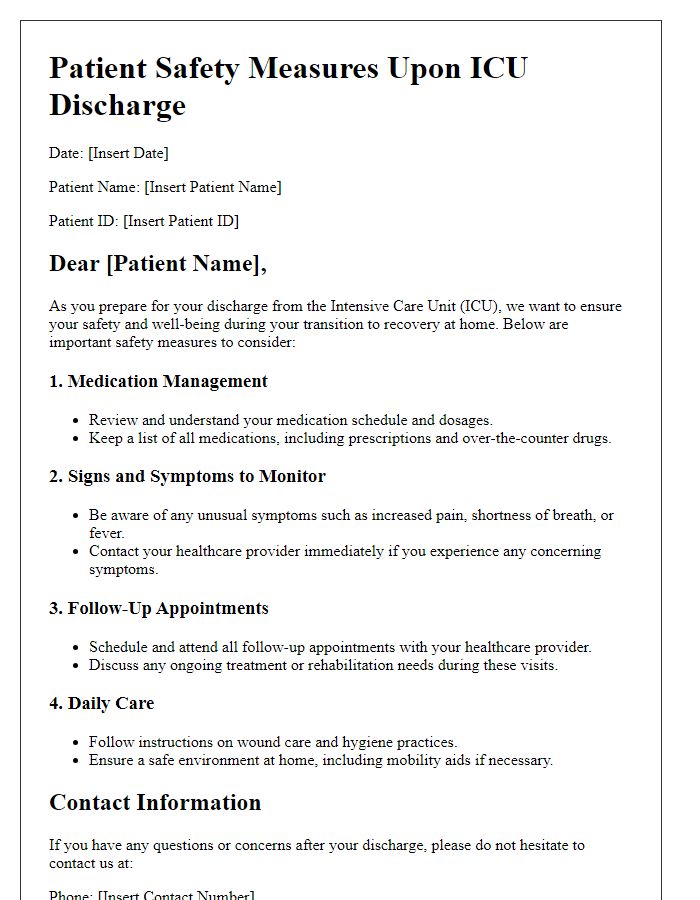
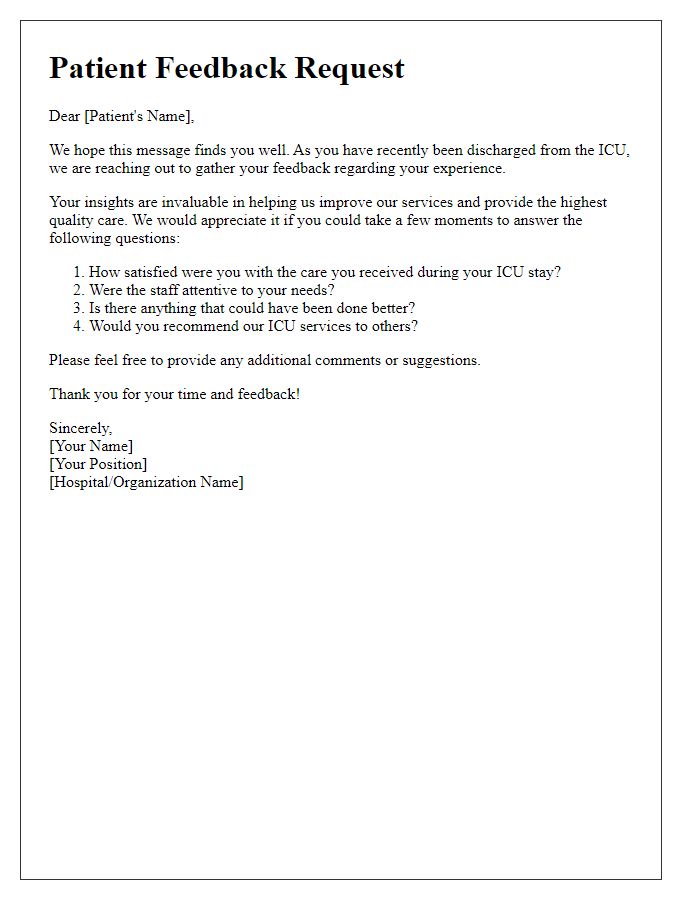


Comments